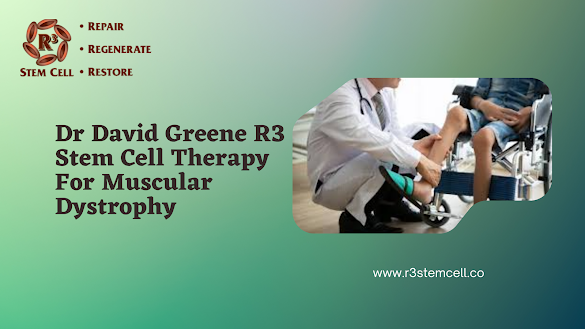Dr David Greene R3 Stem Cell Therapy For Muscular Dystrophy
Muscular Dystrophy is an umbrella term for a group of hereditary disorders caused by the loss of muscle mass. The word ‘dystrophy’ is a Greek word signifying ‘bad nourishment.’An average of 90 percent of muscular dystrophy disorders are inherited, whereas the rest are expressed due to changes in the egg or embryo. If the genes are passed to the daughters, they stay dormant as a carrier; however, if given to sons, these genes express symptoms.
Why Is Muscular Dystrophy Caused?
The muscular system comprises skeletal, smooth, and cardiac muscles that permit the body’s movement, maintain posture and circulate blood. These muscles are bundles of packed cells known as muscle fiber cells. Different types of genetic manipulations cause cells of muscles to decline in such syndromes. The most destructive congenital disabilities are mainly caused due to the lack of a protein called dystrophin.
In addition, as a genetic defect, males are more prone to suffer from muscular dystrophy syndrome. When cells are damaged, in the case of MD, they activate stem cells to form new muscle fibers or fuse with existing cells to repair. However, the damage is so severe over a period that the reserved stem cells are insufficient to manage the degeneration. Muscular Dystrophy’s symptoms range from mild to severe, such as muscle weakness, fatigue, frequently falling, mental instability, and retardation.
How Does R3 Strem Cell Therapy For Muscular Dystrophy Function?
The widely used approach to relieving patients of this syndrome has been using orthopedic appliances like wheelchairs and braces. However, recent technological advancements have found that stem cell therapy can be helpful. In addition, extensive research has proven that stem cell therapy is beneficial in treating numerous neuromuscular disorders like this hereditary syndrome.
The success rate of stem cell therapy has been appreciated across the globe. Furthermore, it has proven that research and implementation can be helpful. For example, stem cells can be used to build muscle fiber and minimize inflammation. This would further result in slowing down muscle deterioration.
Dr David Greene’s R3 Stem Cell Therapy is known to be a promising potential to transfer progressive muscle proteins and restore the stem pool. R3 Stem Cell therapy's aim for muscular dystrophy is not limited to improving a patient’s clinical symptoms. It also achieves the objective of bringing to a halt muscular deterioration.
Has R3 Stem Cell Treatment For Muscular Dystrophy Been Successful?
Dr. David Greene’s R3 Stem Cell Therapy patients share stories of success, which include
- Increased Trunk Muscle Strength
- Better Trunk Balance
- Improvements In Walking
- Improved Hand Function
- Increased Stamina



Comments
Post a Comment